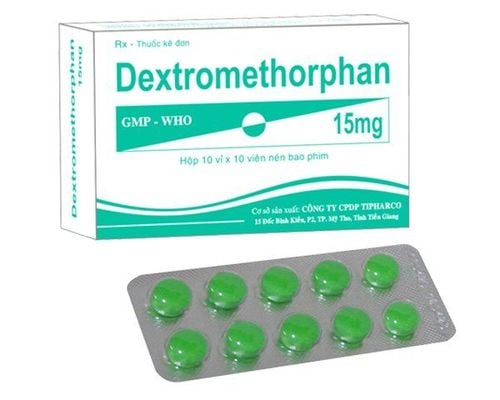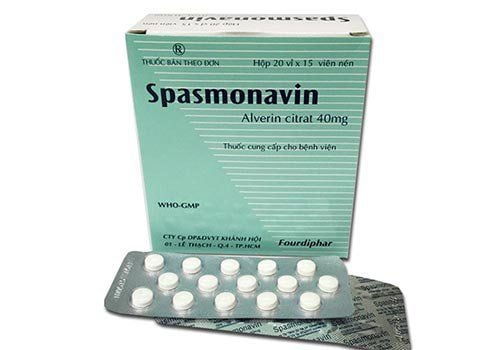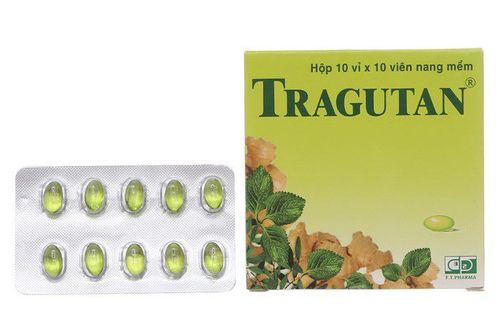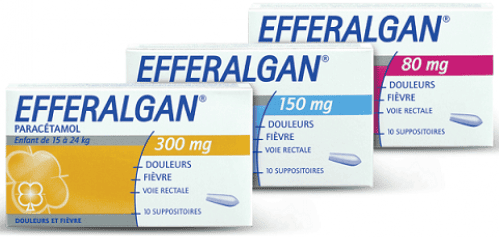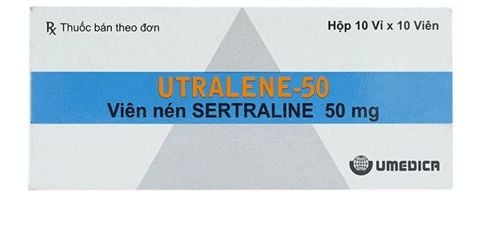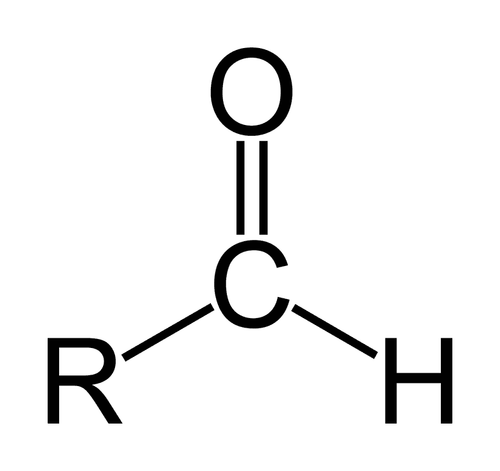This is an automatically translated article.
Tanarhunamol is made in the form of tablets, with the main ingredients being Paracetamol, Dextromethorphan and Chlorpheniramine maleate. The drug is used in the symptomatic treatment of patients with flu.
1. What is Tanarhunamol?
1 Tanarhunamol tablet contains: 500mg Paracetamol, 15mg Dextromethorphan HBr, 2mg Chlorpheniramine maleate and other excipients. The use of each individual ingredient in the drug is as follows:
Paracetamol is a metabolite with the activity of phenacetin. This is an effective pain reliever and fever reducer that can replace aspirin but is not effective in treating inflammation. Paracetamol acts on the hypothalamus, causing hypothermia and hyperthermia due to vasodilation, increased peripheral blood flow; Dextromethorphan hydrobromide is a cough suppressant that acts on the cough center located in the medulla oblongata. Dextromethorphan is used for temporary relief of cough caused by mild irritation of the bronchi and throat such as the common cold, inhalation of irritants. Dextromethorphan is most effective in the treatment of a chronic cough that does not produce phlegm. The drug is often used in combination with many other substances in the symptomatic treatment of upper respiratory tract diseases; Chlorpheniramine is an antihistamine with very little sedative effect. Like most antihistamines, chlorpheniramine also has anticholinergic side effects. Chlorpheniramine's antihistamine effect is through competitive blocking of H1 receptors of effector cells, thereby reducing edema and urticaria in hypersensitivity reactions (including allergic reactions, anaphylaxis). . At the same time, Chlorpheniramine also has anticholinergic effects. Indications for use of Tanarhunamol:
Treatment of symptoms caused by people with flu: Fever, headache, nasal congestion, runny nose, cough, watery eyes, sinusitis, seasonal runny nose. Contraindications to the use of Tanarhunamol:
People with hypersensitivity to active ingredients and components of the drug; Patients with G6PD deficiency; The patient is in an acute asthma attack; Patients with symptoms of prostate enlargement; Patients with narrow-angle glaucoma, bladder neck obstruction, pyloric - duodenal obstruction, gastric ulcer; Women who are breastfeeding, infants, premature babies; Children under 2 years old, pregnant women in the last 3 months of pregnancy; Patients who are taking a monoamine oxidase inhibitor (MAO) within 14 days of taking chlorpheniramine (because the anticholinergic properties of chlorpheniramine are enhanced by MAO inhibitors). In addition, related to Dextromethorphan can cause severe reactions such as dizziness, high fever, increased blood pressure, brain bleeding or even death.
2. Usage and dosage of Tanarhunamol
Usage: Orally.
Dosage:
Adults and children over 12 years old: Take 1 tablet/time x 3-4 times/day. Note do not use the drug for more than 7 days; Children 2 - 12 years old: Use the drug according to the dose prescribed by the doctor. Overdose: Symptoms and treatment depend on the ingredients in the drug. Specifically:
Related to Paracetamol: Overdose due to taking a single toxic dose or taking repeated large doses (up to 7.5 - 10g/day for 1-2 days) or by taking long-term drugs. The most serious acute toxic effect of drug overdose is dose-dependent hepatic necrosis, which can lead to death. The treatment is gastric lavage (preferably within 4 hours of taking the drug). Appropriate detoxification therapy is using Sulfhydryl compounds, activated charcoal, N-acetylcysteine,...; Related to Dextromethorphan: Patients with overdose have symptoms of nausea, vomiting, blurred vision, drowsiness, nystagmus, ataxia, urinary retention, coma, hallucinations, respiratory failure, convulsions,... The treatment is mainly supportive, including intravenous administration of 2mg naloxone, repeated administration if necessary up to a total dose of 10mg; In relation to Chlorpheniramine: The fatal dose of Chlorpheniramine is approximately 25 - 50 mg/kg body weight. Symptoms of overdose include sedation, psychosis, paradoxical central nervous system stimulation, seizures, apnea, convulsions, dystonic reactions, anticholinergic effects, cardiac arrest. pulse, arrhythmia. Management is symptomatic treatment and life support, special attention should be paid to liver, kidney, cardiovascular, respiratory and water and electrolyte balance.
3. Tanarhunamol side effects
When using Tanarhunamol, patients may experience some side effects related to each ingredient of the drug such as:
Related to Paracetamol: Skin rash, allergic reactions, hypersensitivity, nausea, vomiting , anemia, hematopoietic disorders (leukopenia, neutropenia, pancytopenia), kidney disease, nephrotoxicity if the drug is abused for a long time; Related to Dextromethorphan: Fatigue, dizziness, nausea, flushed skin, tachycardia, urticaria, skin rash, mild drowsiness, gastrointestinal disturbances, odd behavior due to poisoning, respiratory depression and central nervous system depression may occur with overdose; Related to Chlorpheniramine: Drowsiness, deep sleep, sedation, dry mouth, dizziness, nausea,... When experiencing side effects of Tanarhunamol, the patient should promptly notify the doctor to receive the treatment. advice on the most effective treatment.
4. Be careful when using Tanarhunamol
Before and while using Tanarhunamol, patients should note:
Regarding Paracetamol: Be careful when using the drug in people with phenylketonuria - urine. Should limit the amount of phenylalanine put into the body; Use with caution in patients with pre-existing anemia; Avoid or limit drinking alcohol while taking the drug because it can be toxic to the liver; Use with caution in people with impaired liver and kidney function; Physicians should warn patients about signs of serious skin reactions such as toxic skin necrosis syndrome, acute generalized exanthematous pustulosis syndrome, Stevens - Johnson syndrome; Related to Dextromethorphan: Use caution when using the drug in people with cough with too much phlegm, chronic cough in people with a habit of smoking, asthma or pneumothorax; Use caution when using the drug in patients at risk or suffering from respiratory depression; Dextromethorphan use is associated with histamine release, so caution should be exercised in allergic children; There is a risk of abuse and dependence of Dextromethorphan (rare), especially if the drug is taken in high doses and for a long time: In relation to Chlorpheniramine: Chlorpheniramine may increase the risk of urinary retention due to its anticholinergic side effects (especially especially in patients with urinary tract obstruction, prostatic hypertrophy, pyloric obstruction) and exacerbation of symptoms in patients with myasthenia gravis; The sedative effect of Chlorpheniramine is increased with alcohol intake or concomitant use with other sedatives; Chlorpheniramine users are at increased risk of respiratory complications, respiratory failure, and apnea. This condition is especially dangerous in people with obstructive pulmonary disease or young children. Therefore, caution should be exercised when using the drug in people with chronic lung disease, shortness of breath or shortness of breath; Chlorpheniramine can cause tooth decay in patients who have to take the drug for a long time (due to its anti-acetylcholine effect causing dry mouth); Avoid taking Chlorpheniramine to people who are driving or operating machinery; Avoid using Chlorpheniramine in people with glaucoma; Chlorpheniramine should be used with caution in the elderly (over 60 years of age) because this group of patients is often more sensitive to the anticholinergic effects of the drug. Other precautions: Tanarhunamol should not be used in pregnant and lactating women. At the same time, because of the potential to cause drowsiness, it is necessary to avoid taking the drug while driving or operating machinery.
5. Tanarhunamol drug interactions
Tanarhunamol drug interactions relate to each ingredient in the drug. Specifically:
Related to Paracetamol: Long-term use of Paracetamol in high doses will slightly increase the anticoagulant effect of coumarin and indandion derivatives; The potential for severe hypothermia should be considered in patients receiving concomitant phenothiazines with antipyretic therapies; Long-term and excessive alcohol consumption can increase the risk of Paracetamol causing liver toxicity; Anticonvulsants (such as carbamazepine, barbiturates, phenytoin,...) induce enzymes in the liver microsomes, may increase the hepatotoxicity of Paracetamol by increasing the metabolism of drugs into substances that can be toxic to the liver; Concomitant use of Paracetamol with isoniazid may further increase the risk of hepatotoxicity; In relation to Dextromethorphan: Avoid concomitant use of Dextromethorphan with MAO inhibitors; Concomitant use of Dextromethorphan with CNS depressants may increase the CNS depressant effect of Dextromethorphan and the above drugs; Quinidine inhibits cytochrome P450 2D6, can reduce the metabolism of Dextromethorphan in the liver, increase the concentration of this substance in the serum, increase the side effects of Dextromethorphan; Related to Chlorpheniramine: MAO inhibitors prolong, increase the anticholinergic effect of antihistamines (Clorpheniramine); Ethanol or other sedative-hypnotics may enhance the CNS depressant effects of Chlorpheniramine; Chlorpheniramine inhibits the metabolism of phenytoin, which can lead to phenytoin toxicity. When prescribed to use Tanarhunamol, patients should coordinate with all instructions of the doctor to ensure the best treatment effect and avoid unpredictable incidents.




